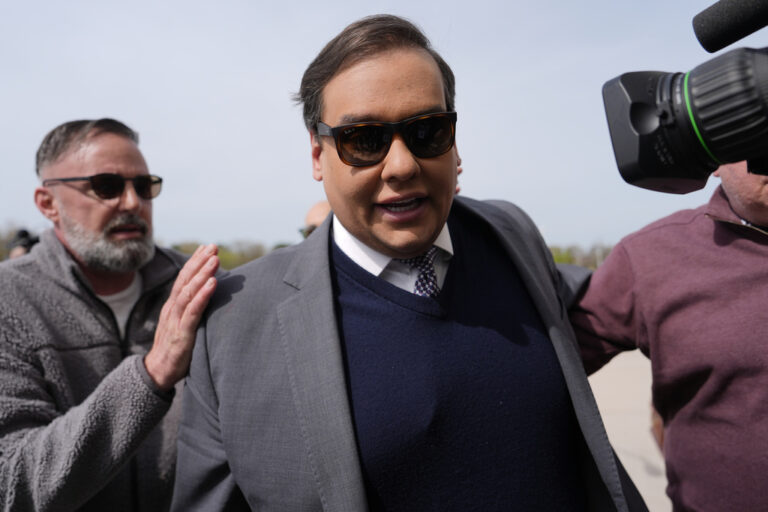LBJ tried jawboning. Richard Nixon issued a presidential edict. The Ford administration printed buttons exhorting Americans to “Whip Inflation Now.”
Over the years, American presidents have tried, and mostly floundered, in their efforts to quell the economic and political menace of consumer inflation.
Now, President Joe Biden is giving it a shot.
Confronting a spike in gasoline and other consumer prices that’s bedeviling American households, Biden on Tuesday ordered the release of 50 million barrels of oil from the U.S strategic petroleum reserve. The move, done in coordination with several other major nations, is intended to contain energy costs. Oil markets, having anticipated the move, were unimpressed with the details: Oil prices actually rose on the news.
It was just the latest step Biden has taken to show he is doing everything he can to combat inflation as gasoline and food prices, in particular, have imposed a growing burden on American households. On Monday, he announced that he would reappoint Jerome Powell as chair of the Federal Reserve, a move meant in part to reassure financial markets that Washington is serious about containing consumer prices. Last month, he announced a deal to ease supply backlogs at the Port of Los Angeles by extending operations there to 24 hours a day, seven days a week.
Yet none of the president’s actions is considered likely to make a meaningful dent in surging prices anytime soon.
“I don’t think the president has many levers to pull to bring down the rate of inflation any time soon,” said Mark Zandi, chief economist at Moody’s Analytics. “The things he is doing are positive, and there’s no downside to them … but they are on the margins. They’re not going to move the dial very much.”
Inflation is always a tough foe, made even more complicated by the unusual recovery from the pandemic recession, with shortages of supplies and workers and shipping bottlenecks forcing up prices.
WHAT IS HAPPENING TO CONSUMER PRICES?
The government’s consumer price index skyrocketed 6.2% in the 12 months that ended in October — the sharpest such jump since 1990.
Coming after nearly four decades of more or less stable prices, the CPI news represents a “once-in-a-generation uptick in inflation,” said Sarah Binder, a George Washington University political scientist who studies the Fed. “The problem is pretty stark because it’s something that voters notice. It’s hard to escape the impact of a spike in inflation on your daily life, whether it’s buying milk or buying gas.’’
The average price of regular gasoline has shot up to $3.40 a gallon from $2.11 a year ago, according to AAA.
Compounding the pain and heightening the pressure on Biden, inflation has been outpacing Americans’ income. Adjusted for price increases, average hourly wages were actually down 1.2% last month compared with a year earlier.
“Inflation is painful, and it’s always political,” said Diane Swonk, chief economist at the accounting and consulting firm Grant Thornton.
WHAT’S BEHIND THE PRICE SPIKE?
It’s partly the consequence of very good news. The world economy — and America’s in particular — rebounded with unexpected speed and strength from last year’s brief but intense recession. It was a result of super-low interest rates, massive government spending and, eventually, the broad rollout of vaccines that allowed more of the economy to reopen.
The swiftness of the rebound caught businesses off guard. A year and a half ago, they were bracing for the worst — laying off workers, letting shelves and warehouses go bare, reducing investment and factory output.
And energy companies did the same: They cut production of oil and gas as demand for transportation fuels plummeted. Once demand came roaring back, they were unprepared. They found themselves scrambling to call back workers and buy enough to fill customer orders. Ports and freight yards couldn’t handle the traffic. Countries competed over boatloads of overpriced liquid natural gas. Periodic COVID-19 outbreaks shut down Asian ports and factories. Global supply chains broke down.
As costs rose, many businesses found that they could pass the burden along to consumers in the form of higher prices. In the meantime, many families had banked their government relief checks and built up their savings. Some critics also blamed Biden’s $1.9 trillion emergency aid package for overheating the economy and contributing to inflation pressures.
Economists are divided over how long the inflation spike will last. Gus Faucher, chief economist at PNC Financial, predicts that inflationary pressures will ease as supply chains sort themselves out.
“I expect to see inflation slow in 2022,″ he said.
WHAT CAN PRESIDENTS DO?
The White House has limited tools for reversing higher prices. That task belongs more to the Fed, which can raise borrowing costs to cool a sizzling economy. During the 1960s and 1970s, though, presidents increasingly felt pressure to do something about inflation because it had become a serious political threat.
President Lyndon Johnson tried to persuade companies to forgo price increases and labor unions to limit wage demands — a practice known as “jawboning.” When Bethlehem Steel raised steel prices in 1965, Johnson criticized its executives as unpatriotic, and they backed down, according to Robert Samuelson’s book, “The Great Inflation and Its Aftermath.” When egg prices rose in 1966, Johnson ordered America’s surgeon general to highlight the health hazards of cholesterol in eggs, with the intent of lowering egg sales and therefore prices.
Nixon imposed wage and price controls in 1971 and 1973, which briefly stifled inflation, only to see prices soar once the controls were lifted.
Gerald Ford’s “Whip Inflation Now” program encouraged Americans to grow their own vegetables, reduce their food waste and consume less. Americans responded mostly by mocking the program. Some wore the president’s WIN buttons upside down, explaining that the resulting NIM stood for “No Immediate Miracles.”
WHAT HAS BIDEN DONE?
Biden last week signed into a law a $1 trillion public works program, which pours money into fixing roads, bridges and ports, potentially easing the supply chain backlogs that have contributed to rising prices. Untangling shipping bottlenecks would be doubly helpful: It would ease inflationary pressures and boost the economy by increasing the flow of goods to customers.
Last week, Biden sent a letter to the Federal Trade Commission asking the FTC chair to consider investigating whether higher gasoline prices were the result of “illegal conduct.” The White House is also stepping up anti-trust enforcement of the meatpacking industry, seeking to increase competition and drive down meat prices.
His decision to re-nominate Powell to lead the Fed was meant, in part, to reassure the financial markets of Washington’s resolve to prevent consumer prices from spiraling out of his control. The other likely contender for the job — Lael Brainard, a member of the Fed’s Board of Governors — was perceived as less hawkish toward inflation.
WHY DID BIDEN TAP THE STRATEGIC PETROLEUM RESERVE TUESDAY?
The idea was that by putting more oil on the market, prices would fall. That hasn’t happened. But depending on what happens in the rest of the world, there’s still a chance it could work.
America’s petroleum reserve holds about 605 million barrels of oil in underground caves in Texas and Louisiana. It was designed in the 1970s in response to the Arab oil embargo to store oil in case there was a supply disruption or emergency. But the dynamics of the global oil industry changed dramatically in recent years, and now the U.S exports more oil than it imports.
The 50 million barrels that Biden promised to release will likely be sold slowly, at a rate of about 1 million barrels per day, meaning that the new influx of oil could last about two months. Adding even a small amount of oil to the market can tip it into surplus, and potentially lower the price, said Jim Burkhard of IHS Markit.
“The immediate price reaction is not the final judgment on the effectiveness of this of the effort,” he added. “It will really be in the months ahead.”
(AP)












4 Responses
Biden’s tapping into the Strategic Petroleum Reserve strikes me as bad strategy. I thought the purpose of the reserve was to assure that the US has fuel supplies in times of extreme danger, e.g., wars or major disruptions in production. The current price spike is the result of supply chain problems that will be fixed in a reasonable amount of time.
The premise of this article is absurd. All Biden needs to do is repeal all his executive orders, issue no new ones, and veto future “infrastructure” bills. The closer America gets to its pre-Biden situation, the better.
This is from the AP, which means, of course, Always Propaganda.
As RAM500 noted, the whole article is absurd because it ignores that the administration, from the beginning, immediately reversed the successful and sane policies of President Trump’s administration, under which the country was energy-independent and had inflation under control.
I usually don’t like to comment when the general opinions of existing comments are similar to my own, but this article is so dishonest, as is its title, that it makes me angry.
The title claims Biden aims to beat inflation, which is a lie. Biden could care less about inflation, as long as people stop using so much carbon-compromising fuel. That’s why he shut down the pipelines and offshore drilling, so gas prices would jump and everyone would rush out and buy an electric or hybrid vehicle. He continues his extended payments to the “unemployed”, so no one wants to work, creating shortages and higher prices in all markets. He supports big unions (his Build Back Better joke of a plan favors unions to the point of being unconstitutional), so the unions in the ports don’t allow workers to work longer hours, exacerbating the goods shortages which of course makes inflation worse. He enforces and encourages unnecessary and illegal vaccine mandates, which further reduces the labor force and increases costs since many (rightfully albeit perhaps not wisely) refuse to be vaccinated. For example, Cedars Sinai Hospital in LA offered a 60% increase to hire nurses to replace staff that is gone due to non-vaccination.
Need I go on?
The rest of the article is trying to tell the mentally-deficient CNN/NBC/etc-watching American citizenry that their sweet lovable President is doing everything possible to beat inflation, but it’s very hard, and definitely not his fault!
What an unforgivable sham! It makes me sick…